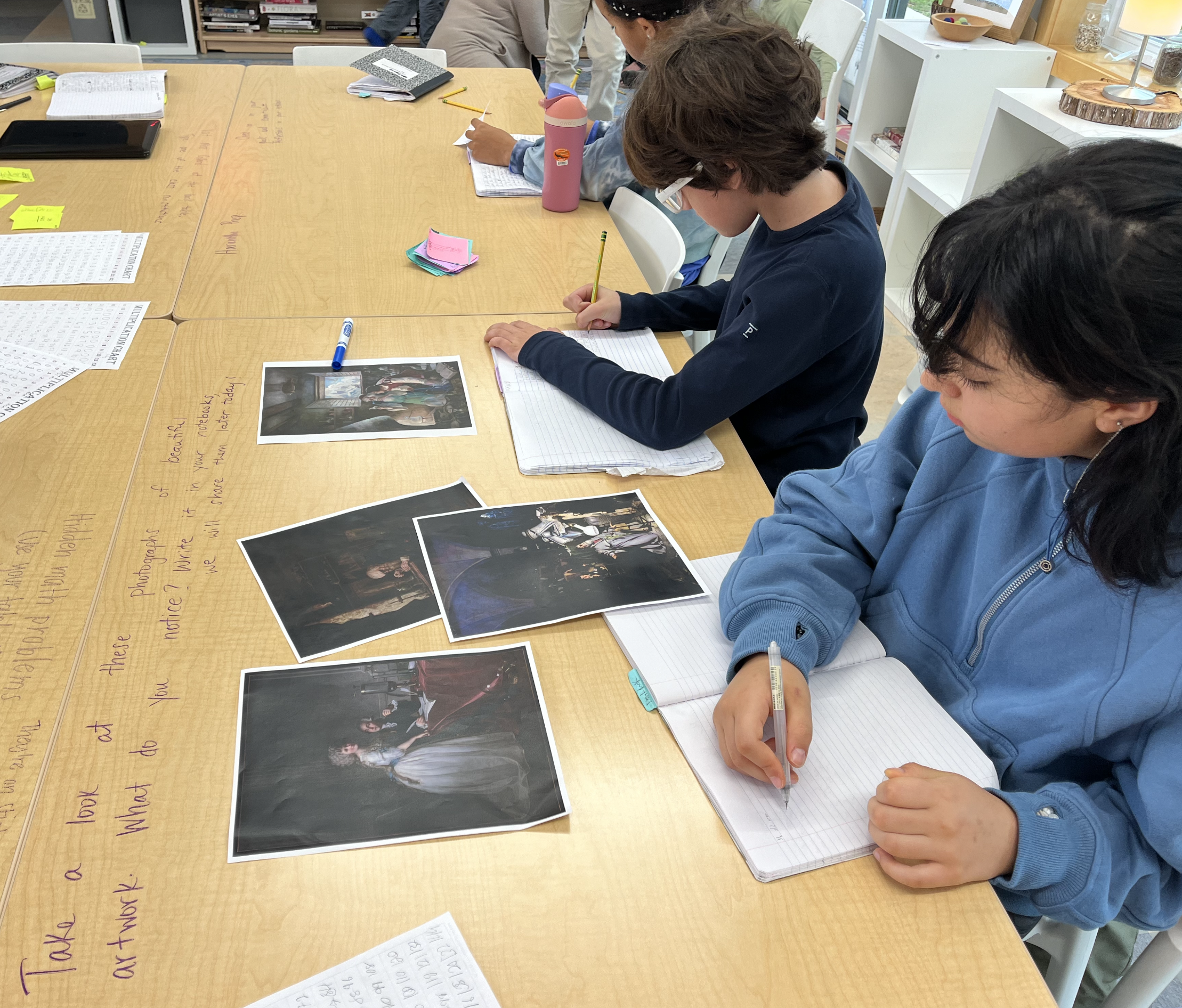
The Art of Science Education: Interdisciplinary Science Blog
By Jennifer Staple-Clark, Founder and Executive Director
The Art of Science Education
At Slate School, our science curriculum is infused with invention and experimentation, art and history, and deep interdisciplinary perspective. Whereas science teaching is typically devoid of the why and how, our students at Slate School are curious about questions, delve into the invention of knowledge, and invent knowledge for themselves. They learn about the beautiful experiments that made the discoveries that our scientific knowledge is built on today, and like those incredible scientists, our students, too, are engaged in the wonder of science.
-

A Curiosity-Driven, Interdisciplinary Approach to Atoms, Elements, and the Periodic Table
Our approach to student learning about the periodic table exemplifies our non-siloed, curiosity-driven education. During classroom conversation, our Grade 5 and 6 students expressed interest in chemistry. At the same time, the students were contemplating the organization of information and had been making charts for the plants in their room. This was a natural entre into some key benchmarks in Grade 5 and 6: understanding atoms, their structure and how they interact, the periodic table, understanding and communicating the connectedness of chemical understandings to other scientific fields and other disciplines, and more.
-

Rooted Discoveries: Compounds, Bacteria, and George Washington Carver
Our Grade 5/6 students learned about atoms, elements, and the periodic table through a historical lens. At the same time, they were learning about plantations and slavery, reading the book Freewater by Amina Luqman-Dawson as a read aloud, and considering Slate School's own garden. As they transitioned into the realm of compounds and bonding, the 19th-century work of George Washington Carver provided an interdisciplinary lens, weaving together diverse areas of curiosity and learning.
-

Guided by Art, An In-Depth Exploration of Compounds, Colors, Sound, and Calculations
Art, history, chemistry, music, physics, mathematics, and geology converged in a captivating interdisciplinary exploration that reached its pinnacle at the Yale Art Gallery. Witnessing the enthusiasm, curiosity, and excitement of our students throughout the journey was exhilarating. Our interdisciplinary journey began with a deep dive into geology, soil, cave art, Maya art, and chemistry.
-

From Cave Art Pigments to Catalase: Interdisciplinary Learning in Experiment Studios
During the three weeks between the Thanksgiving Holiday and Winter Break, we implemented an Intersession Studio period, consisting of 50-minute sessions each afternoon. All K-6 students participated in a variety of studios that nurtured their interests, including Experiments, Improv, Rhythm and Beats, Dance, and Storytelling. Our Grade 3-6 students immersed themselves in the Experiments Studio over several days, exploring scientific thinking and experimental design.
-

Photosynthesis: An Exploration from Molecular Structures to Radiocarbon Dating
Our Grade 5/6 students embarked on an in-depth exploration of photosynthesis through a variety of perspectives, all building upon their growing understanding of chemical processes. The journey began with a focus on light, prisms, the electromagnetic spectrum, and an exploration of color creation through pigments and nanostructures. Then, we welcomed Chemistry Professor and NYU President Emeritus Andrew Hamilton for a Zoom Lunchtime Conversation. Serendipitously, he shared with our students that his passion for chemistry began as a child when he realized that hemoglobin in animals and chlorophyll in plants have such similar chemical structures.